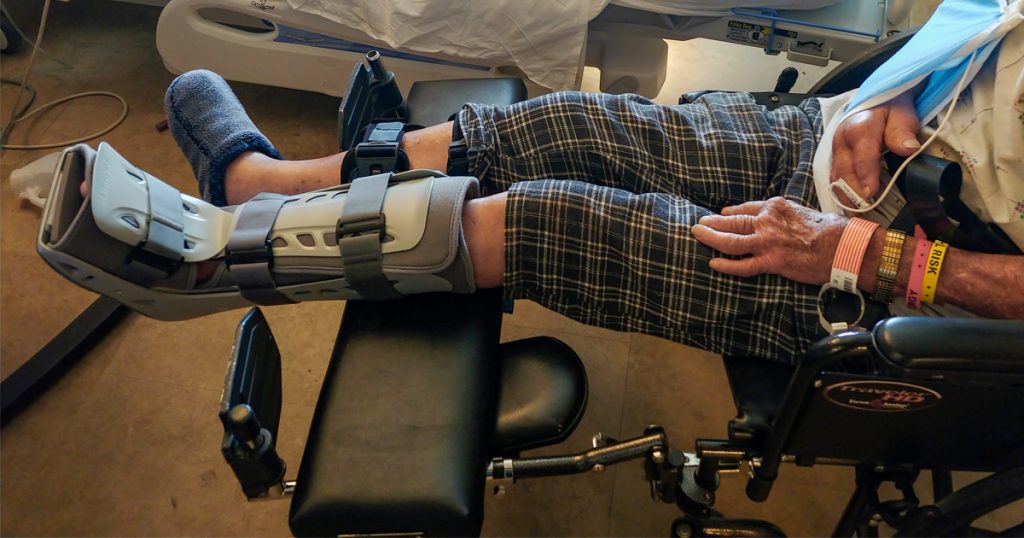UTRF Selects Four Tickle College of Engineering-Led Projects for Funding
The UT Research Foundation has chosen four Tickle College of Engineering projects for continued funding and support from a total of ten across the university system.
Those four 2021 UTRF Technology Maturation Grant winners are:
- “External Leg Fixator Leg Rest,” by Industrial and Systems Engineering (ISE) Assistant Professor of Practice Floyd Ostrowski and students in the Heath Integrated Business and Engineering Program (IBEP);
- “A Compact and Non-Intrusive Anomaly Detection Device for Digital Industrial Assets,” by Nuclear Engineering (NE) Research Assistant Professor Fan Zhang;
- “Modular Soft Robot Grippers Using Concentric Precurved Bellows,” by Mechanical, Aerospace, and Biomedical Engineering (MABE) Associate Professor Caleb Rucker and doctoral student Jake Childs;
- “Recycling of Wind Turbine Blades into Nonwoven Composites for Fuel Cells,” by MABE Research Assistant Professor Ryan Ginder.
“We’re proud of our faculty members who were selected for backing by UTRF and pleased to see multiple disciplines represented,” said Matthew Mench, interim dean of the Tickle College of Engineering. “These projects all have a real-world impact and will make a difference in people’s lives, which is what lies at the heart of all engineering.”
Building a Better Wheelchair

Wheelchairs offer a means of mobility to the 2.7 million Americans that use them in a given year, according to the National Institutes of Health, but a sizable portion of those people have injuries that make using them uncomfortable at best or impossible in some situations.

Following a Tiny TED Talk from UT Medical Center physical therapist Elizabeth Phillips that outlined those difficulties, ISE and IBEP students under Ostrowski’s direction sought about finding a solution.
Students took on challenges such as cases where the leg rest was too small, where the leg rests caused discomfort, or where patients could be discouraged by a lack of adequate, individually relevant equipment. The students turned their ideas into a physical, real-world proof-of-concept that includes an easy-to-use leg rest, works with current wheelchair models, is easy to clean, and is both supportive and comfortable.
Although COVID-19 initially stalled their progress, Ostrowski was able to turn it into a senior design project, which extended the timeline enough to keep it going through prototyping.
Now, thanks to the UTRF funding, students are looking to have actual patients test their idea later this semester, with a patent opportunity and a chance for the class to share potential royalties looming.
Minimizing Attacks on Nuclear Infrastructure

Zhang’s work in NE involves improving and better safeguarding the controllers used in industrial infrastructure—such as Programmable Logic Controllers that are used to control actuators like pumps in industrial processes.
Such critical pieces of technology are commonly left undefended within the innermost layers of an industrial plant’s operational control network, operating within systems where it is assumed that other equipment communicating on the network is trustworthy. Her proposed device can be attached to a controller to monitor the process and detect anomalies using machine learning algorithms, which is much more effective than current methods that aren’t effective when a cyber-attack leaves no trace, such as an insider attack.
Current methods monitor the whole system and run the machine learning algorithms on a centralized platform, which increases the attack surface and is subject to data availability and high computing cost. Zhang’s proposed localized technology minimizes the attack surface.
Zhang’s technology can be widely used in industrial control systems found in power plants, oil and gas production, water treatment facilities, and raw material processes such as steel production.
A Knoxville start-up company, Sentinel Devices LLC, which develops edge-based industrial internet-of-things cybersecurity systems, has a research license agreement with UTRF for the technology, which is currently going through the patent process.
Improving Surgery Through Robotics

Many aspects of the medical profession have been improved by the continued growth of robotics, particularly procedures that require delicate maneuvering at small levels.
MABE’s Rucker and Childs, his doctoral student, have made a breakthrough that could further improve medical outcomes and possibilities by designing a way to allow for better control of equipment used in such procedures.
While traditional methods have used plastic tubing as the “carrier” of medical equipment, the pair designed new tubing based on the idea of using a bellows design, which provides more flexibility, options, and precision in procedures by utilizing a design that is more reminiscent of a phone cord than the standard solid tubes of the past.
The grant funds will allow them to prototype and conduct experiments that assess the technology’s suitability for various applications as well as enable them to fabricate bench-top tested robots to showcase to potential industrial partners.
They will also explore different manufacturing methods such as electroforming that can miniaturize the technology down to scales appropriate for minimally invasive surgery.
Making Fuel Cells from Scrap

MABE’s Ginder has helped pioneer methods of turning used wind turbine blades, which were previously long thought to be a waste product, into new materials, helping extend their usefulness while eliminating waste at the same time.
For his project, he will use the funds to demonstrate how the discarded blades can be specifically of use in fuel cells and the alternative fuel industry.
Ginder’s idea is to take the cast-off materials, create nonwoven composites, test and optimize those composites for mechanical and conductivity performance, and mold and validate the fuel cell composite bipolar plates in test operation.
In this way, the blades are not only diverted from landfills, but will also give a boost to fuel cell use by providing a steady source of raw materials for their construction.